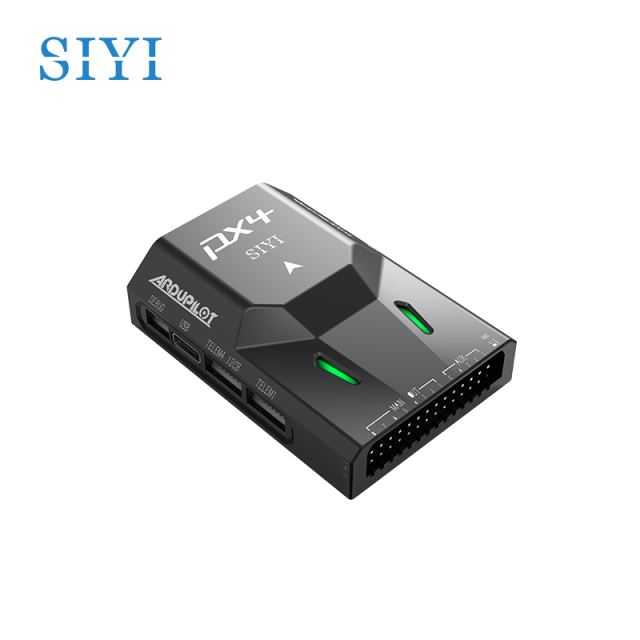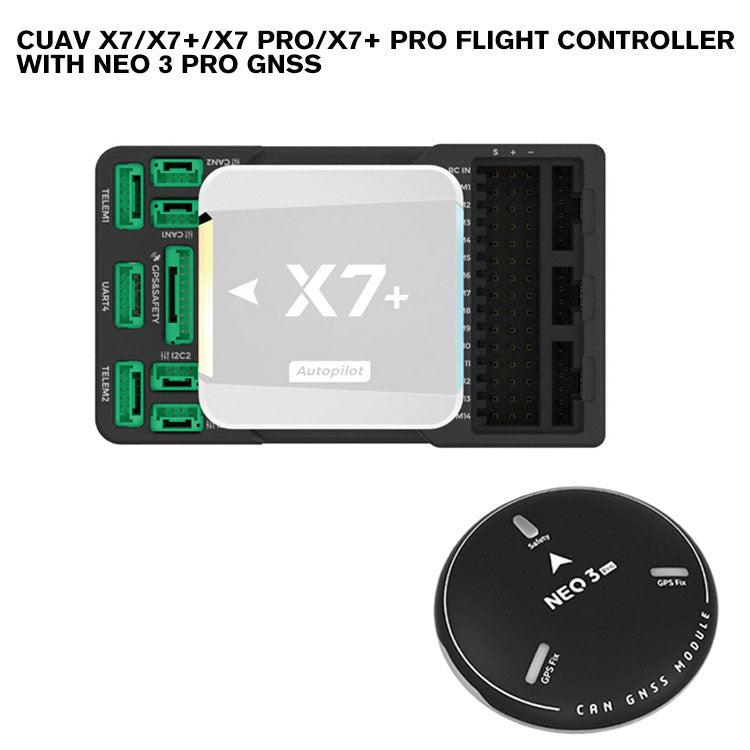SparkNavi Drone Flight Controller and GNSS/INS Made in Taiwan: Innovation for Expert UAVs
SparkNavi Drone Flight Controller and GNSS/INS Made in Taiwan: Innovation for Expert UAVs
Blog Article
Exploring the Duty of Drone Flight Controllers in Enhancing Trip Security and Navigating Performance
The innovation of drone technology has actually significantly boosted the relevance of flight controllers, which serve as the mind of these airborne cars. By incorporating real-time data from a range of sensing units, trip controllers enhance flight security and navigating performance, guaranteeing that drones can operate efficiently also in intricate environments.

Recognizing Trip Controllers
Flight controllers are indispensable elements in the performance of drones, working as the minds that stabilize and handle flight procedures. These advanced devices process data from various sensors, including accelerometers, gyroscopes, and GPS, to make certain that the drone preserves its desired flight course. The flight controller analyzes this information and executes commands based on pre-defined algorithms, making it possible for the drone to reply to environmental adjustments, such as wind or obstacles.
The main feature of a flight controller is to preserve security during flight. It achieves this by making real-time modifications to the drone's electric motors and control surfaces, guaranteeing equilibrium and control. In addition, contemporary flight controllers incorporate innovative functions such as waypoint navigating, permitting automated trip paths and boosted operational efficiency.
Understanding the design of trip controllers is critical for both specialists and enthusiasts. As innovation breakthroughs, trip controllers have come to be extra qualified and compact, incorporating artificial intelligence to adjust and enhance decision-making procedures to complicated flight scenarios.
Key Elements of Trip Stability
Achieving optimal trip stability in drones relies upon several vital parts that operate in concert to ensure regulated and smooth operations. Central to this security is the trip controller itself, which processes information from different sensors to preserve the desired trip mindset. This includes accelerometers and gyroscopes that determine motion and orientation, permitting real-time adjustments to the drone's placement.
Another critical part is the digital rate controllers (ESCs), which manage the power provided to the motors. By finely adjusting motor speeds in reaction to flight controller commands, ESCs assist maintain equilibrium and neutralize disruptions brought on by wind or sudden movements.
Additionally, the layout of the drone's framework plays an essential role in trip security. A well-structured framework decreases resonances and enhances the overall wind resistant profile, adding to smoother flight qualities. Lastly, the assimilation of innovative algorithms within the trip controller aids in predictive changes, guaranteeing a responsive and versatile trip experience.
With each other, these elements form a natural system that boosts a drone's stability, permitting exact handling and improved performance in numerous trip problems.
Navigating Efficiency Techniques
Effectiveness in navigating is important for maximizing drone procedures, specifically in complex atmospheres. Efficient navigation techniques boost the capacity of drones to traverse challenging terrains and avoid challenges, therefore enhancing functional efficiency and safety.
One famous method is the application of innovative general practitioners and inertial measurement units (IMUs) that supply specific area monitoring and alignment information. These technologies enable drones to compute ideal flight paths in real-time, taking right into account different elements such as wind conditions and potential obstacles.
Another technique involves making use of formulas for course preparation and optimization. Algorithms such as A * and Dijkstra's algorithm can be deployed to identify the most efficient route while decreasing power usage and trip time. Incorporating device understanding designs can allow drones to adaptively learn from their settings, boosting navigation abilities with experience.

Effect on Autonomous Drones
The combination of sophisticated navigation techniques has actually greatly changed the abilities of independent drones, allowing them to run with better autonomy and accuracy. SparkNavi drone flight controller and GNSS/INS made in taiwan. These improvements Read Full Report are mostly attributed to sophisticated trip controllers that make use of real-time information processing and sensor blend, enabling drones see this website to navigate complex settings perfectly
The influence on autonomous drones expands past plain navigation; it includes boosted barrier avoidance, boosted security during vibrant conditions, and enhanced mission reliability. By leveraging formulas that incorporate artificial intelligence and artificial intelligence, drones can adapt to altering situations, making informed choices that enhance their trip paths while decreasing threats.
Furthermore, the implementation of durable flight controllers has assisted in the implementation of complex tasks, such as airborne inspections, shipment solutions, and farming monitoring, with marginal human intervention. This capability not just improves procedures but likewise lowers human error, therefore boosting overall safety and security.
Therefore, the functional extent of autonomous drones has actually expanded significantly, making them vital tools in different sectors. Their ability to carry out successfully in varied circumstances underscores the vital duty that advanced flight controllers play fit the future of unmanned airborne systems.
Future Trends in Trip Control
Regularly, advancements in flight control innovation are positioned to redefine the landscape of drone procedures in the coming years. Arising patterns show a substantial shift towards improved fabricated knowledge (AI) assimilation, enabling flight controllers to process real-time information extra successfully. This evolution will facilitate improved decision-making capacities, permitting drones to adjust to vibrant ecological conditions autonomously.
Furthermore, the implementation of artificial intelligence formulas is expected to enhance anticipating maintenance, thereby reducing downtime and prolonging the lifecycle of drone elements. This positive technique to upkeep will certainly be critical as drone applications expand across different industries, from agriculture to logistics.

.jpg)
Lastly, improvements in safe and secure interaction methods will certainly resolve safety and security and regulative worries, ensuring that drones can operate seamlessly in congested airspaces (SparkNavi drone flight controller and GNSS/INS made in taiwan). Collectively, these trends point towards a future where trip control systems are not just smarter and much more efficient but likewise capable of operating safely in an increasingly integrated airspace
Verdict
Finally, drone flight controllers are indispensable to improving trip security and navigating efficiency with the innovative handling of sensing unit data. By preserving ideal trip mindsets and utilizing sophisticated formulas for course optimization and barrier evasion, these controllers significantly add to the freedom and functional security of drones. As modern technology remains to progress, better advancements in trip control systems are anticipated, promising enhanced efficiency and broadened capabilities in the realm of unmanned airborne automobiles.
By integrating real-time data from a selection of sensors, trip controllers enhance flight stability and navigation effectiveness, making certain that drones can operate smoothly even in complex atmospheres.Flight controllers are integral components in the functioning of drones, serving as the brains that manage and support flight procedures. In addition, modern-day trip controllers integrate sophisticated features such as waypoint navigating, permitting for automated flight paths and enhanced functional performance.
Central to this security is the trip controller itself, which refines data from numerous sensing units to keep the desired trip attitude.In conclusion, drone flight controllers are important to improving flight security and navigation efficiency with the innovative handling of sensor information.
Report this page